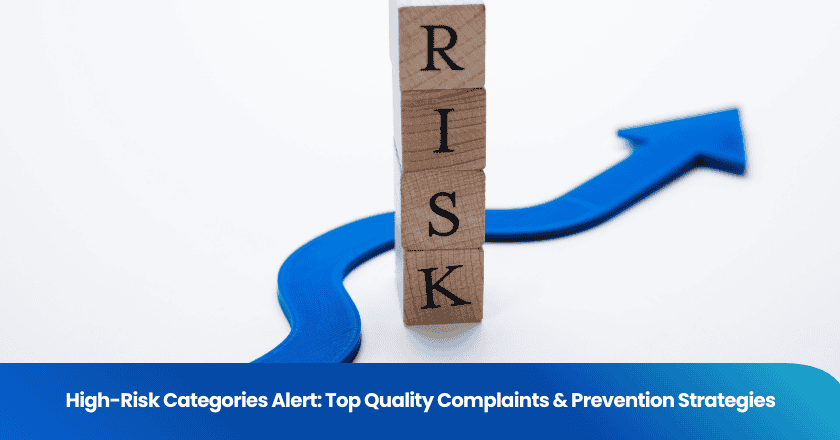
Consistency is crucial for garment manufacturing, as it directly impacts brand reputation, customer satisfaction, and operational efficiency. Product consistency ensures that customers receive products of the same quality every time they purchase, thereby building trust and loyalty. Quality control serves as the cornerstone for maintaining manufacturing consistency. It minimizes deviations through systematic inspections, adherence to standards, and corrective measures to ensure consistent output.
1. Challenges faced by consistency in garment manufacturing
In the garment manufacturing industry, ensuring product consistency is of utmost importance.
Differences in raw materials
The difference in raw materials is a significant factor. There may be fluctuations in the quality of fabrics from different batches, and it is difficult to fully guarantee dyeing consistency, which can lead to significant differences in color and texture of the final product.
Furthermore, the durability of materials is also a key factor affecting product consistency. Different raw materials exhibit varying levels of wear resistance, wrinkle resistance, and other properties, further exacerbating product inconsistency.
Differences in manufacturing processes among different factories
The variations in manufacturing processes across different factories are also a significant factor contributing to product inconsistency.
There are significant differences among factories in terms of equipment configuration, technical level, and employee skills, which make it difficult to maintain uniform standards during the production process. Even if the same design drawings and specifications are used, products produced by different factories may still exhibit notable differences in detail processing, sewing techniques, and other aspects.
Quality deviation caused by human factors
Human factors are also a non-negligible aspect that contributes to quality deviations.
Operator errors, inadequate training, and negligence during the production process can all have a negative impact on product quality. For instance, operators may cause issues such as product size deviations, uneven stitching, or ironing marks due to improper handling during cutting, sewing, or ironing. Additionally, employees with insufficient training may not accurately understand the production process requirements, leading to numerous inconsistencies during production. Negligence in production, such as missed inspections or incorrect inspections, may result in defective products entering the market, affecting brand image and consumer satisfaction.
2. Key quality control practices to ensure consistency
To ensure product consistency, enterprises need to adopt a series of key quality control practices.
Standardized inspection of raw materials
Standardized raw material inspection is the foundation for ensuring product consistency. Before raw materials enter the factory, they must undergo comprehensive and meticulous inspection. This includes checking whether the raw materials have any defects, such as damage, stains, or imperfections. At the same time, the color of the raw materials must be matched to ensure consistency within the same batch or between different batches. In addition, the raw materials must meet predefined specifications, including key indicators such as material quality, thickness, and elasticity. Through standardized raw material inspection, it is possible to effectively avoid inconsistencies in the final product caused by raw material issues.
Approval of pre-production samples
Pre-production sample approval is a crucial step in ensuring consistency in mass production. Before officially starting production, samples need to be created and approved. These samples will serve as a benchmark for mass production, ensuring that all produced products are consistent with the samples. During the sample approval process, a comprehensive inspection of the sample's dimensions, sewing process, decorative details, and other aspects should be conducted to ensure compliance with design requirements and quality standards. Through pre-production sample approval, potential issues can be identified and resolved before production begins, thereby reducing the risk of inconsistency in mass production.
Regular quality inspection of the production process
Regular quality inspections during the production process serve as a continuous safeguard to ensure product consistency. Quality inspections should be conducted at multiple stages during production to identify and rectify issues as early as possible. These inspections may include dimensional checks at the cutting stage, stitch checks at the sewing stage, and flatness checks at the ironing stage. Through regular quality inspections during the production process, deviations and anomalies can be promptly identified and appropriate corrective measures can be taken. This not only ensures the consistency of the final product but also enhances production efficiency and reduces the rate of defective products.
In summary, standardized raw material inspection, pre-production sample approval, and regular quality checks during the production process are key quality control practices for ensuring consistency in garment manufacturing. These practices are interrelated and mutually supportive, collectively forming a comprehensive quality control system that ensures product consistency.
3. The importance of establishing clear standards
In the garment manufacturing industry, ensuring product consistency and high quality is crucial for winning the market and establishing brand credibility. Formulating clear and explicit standards serves as the cornerstone for achieving this goal.
Define quality indicators and tolerance ranges
Defining quality indicators and tolerance ranges is the core content of establishing clear standards.
In the garment manufacturing process, sewing, dimensions, and durability are key factors in measuring product quality. Therefore, we must establish measurable standards for these factors to ensure that every product meets the established quality requirements. For sewing, we can stipulate standards such as the density and uniformity of stitches, as well as the strength of the stitching; for dimensions, we can set specific size ranges and allowable error values; for durability, we can test the wear resistance and wrinkle resistance of the product by simulating actual usage scenarios.
By specifying these quality indicators and tolerance ranges, we can provide specific guidance for the production process, ensuring product consistency.
Align standards with all suppliers
Merely setting standards is not enough; we also need to align these standards with all our suppliers. In the garment manufacturing process, the supply of raw materials and accessories is an indispensable part. If the supplier's quality standards are not aligned with ours, even if our production process is rigorous, it will be difficult to ensure the consistency of the final product. Therefore, we must establish a close partnership with our suppliers and jointly adopt the same quality benchmarks. This means that we need to communicate our quality standards, tolerance ranges, and testing methods with our suppliers to ensure that they understand and follow these standards. At the same time, we also need to conduct regular quality audits on our suppliers to ensure that they continue to meet our quality requirements.
By aligning standards with suppliers, we can reduce the differences between raw materials and auxiliary materials, and minimize the risk of inconsistency in the production process. This not only enhances product quality and consistency but also boosts production efficiency and reduces the rate of defective products. Establishing common quality standards with suppliers also helps strengthen mutual trust and cooperation, laying a solid foundation for long-term collaboration.
4. Utilize technology to enhance consistency
Automated quality inspection tool
The application of automated quality inspection tools is particularly prominent. Advanced technologies such as computer vision can be utilized to conduct precise and consistent assessments of product quality. These tools can swiftly capture and analyze various details of the product, ensuring the accuracy and objectivity of quality assessment, and enhancing the consistency and reliability of quality inspection.
The role of data analysis in trend identification
In addition, data analysis plays a pivotal role in trend identification. By conducting in-depth analysis of production data and mining potential patterns and correlations within the data, we can promptly identify recurring issues in the production process. Leveraging the power of data analysis, we can quickly pinpoint the root cause of problems and take corresponding improvement measures to effectively prevent their recurrence. This not only enhances production efficiency but also further ensures the consistency of product quality.
5. Enhancing consistency through collaboration among teams
Seamless communication between the design and production teams
After years of industrial development, everyone should be well aware of the importance of seamless communication between teams, especially the close collaboration between the design and production teams. To ensure that design specifications are clearly and accurately communicated to the production team and fully understood by them, an efficient and smooth communication mechanism needs to be established. The design team will elaborate on the design concept, specifications, and key details of the product, while the production team actively participates in discussions, offering feasible suggestions to ensure that the design scheme can be perfectly presented in actual production.
Cross-departmental training and knowledge sharing
In addition, we emphasize cross-departmental training and knowledge sharing. Through regular training programs, we invite experts from various fields to impart professional knowledge and share best practices with team members, continuously enhancing the overall quality and capabilities of the team. At the same time, we encourage team members to communicate and share experiences with each other, fostering a positive atmosphere of knowledge sharing. The cross-departmental training and knowledge sharing mechanism helps maintain consistent quality standards, ensuring that different teams can maintain a high degree of consistency in their work and jointly promote the smooth progress of projects.
6. Case study: Successful implementation of consistent quality control
In the garment industry, a brand's reputation and market competitiveness are often closely tied to the stability of its product quality. Some renowned brands are acutely aware of this, and therefore, they ensure excellent consistency in product quality by implementing strict quality control practices. These brands have established detailed quality standards for every aspect of the process, from raw material procurement and production processing to finished product inspection, and have set up a comprehensive quality control system.
For instance, a globally renowned clothing brand has implemented meticulous management in various aspects of its production process, including fabric selection, cutting, sewing, ironing, and packaging. They utilize advanced inspection equipment and technology to conduct comprehensive and multi-faceted inspections of product quality, ensuring that every product meets the brand's quality standards. The brand also emphasizes employee training and skill enhancement, regularly organizing training courses related to quality control to elevate employees' quality awareness and professional skills.
It is through these rigorous quality control practices that the brand has successfully achieved excellent consistency in product quality. Their clothing products have won widespread praise and trust from consumers in the market, and the brand's reputation and market competitiveness have also been enhanced.
This successful case fully demonstrates that by implementing strict quality control practices, a brand can effectively enhance the consistency of product quality and stand out in the fierce market competition.
7. Customer Case: Strategic Partnership Between Buxton and TradeAider
Company Background:
Buxton, a major retailer based in London, UK, specializes in men's and women's apparel. Over the years, Buxton has gained the trust of a wide customer base across Europe with its commitment to product innovation and quality. However, with the internationalization of its supply chain, managing suppliers and product quality became increasingly complex. Ensuring control over the entire supply process—from qualification audits to manufacturing and shipping—was a growing challenge.
The Solution:
In 2019, Bts formed a strategic partnership with TradeAider, appointing them as their exclusive third-party inspection partner in China. TradeAider provided comprehensive quality control (QC) services through its online platform, including three main services:
Factory Audits – TradeAider’s QC team conducted on-site audits of Bts’s suppliers to evaluate key areas such as supplier credentials, production capacity, equipment, and quality management systems, ensuring compliance with Bts’s standards.
Product Inspections – Experienced inspectors carried out thorough quality checks at various production stages to ensure that the products met Bts’s specifications and conformed to UK and EU standards.
Loading Supervision – TradeAider provided full logistics supervision, checking the integrity of shipments according to the packing list and ensuring that products were packed and labeled correctly.
Results:
With TradeAider’s professional QC services, Bts was able to significantly improve its supply chain management. The collaboration enhanced transparency and control over the supply process, particularly for products sourced from China. As a result, Bts minimized trade risks associated with quality and compliance issues, ensuring stable product quality. This not only strengthened customer trust and satisfaction but also laid a solid foundation for Bts’s position in the market.
END
The consistency of garment manufacturing relies on systematic quality control practices, clear standards, and effective team collaboration. Emerging technologies such as artificial intelligence and the Internet of Things are continuously revolutionizing quality control, providing higher consistency and efficiency.

Smart Sourcing & Quality Assurance Content Team
Article by Smart Sourcing & Quality Assurance Content Team
The Smart Sourcing & Quality Assurance Content Team is dedicated to delivering high-quality, easy-to-understand information that empowers our audience to navigate the complexities of global sourcing and quality assurance. Our team of writers has extensive experience in creating content across various fields, including procurement, supply chain management, quality assurance, market trends, and industry best practices. We specialize in sectors such as apparel, textiles, and consumer goods, providing targeted insights to help businesses in these industries optimize their sourcing strategies, ensure product quality, and maintain a competitive edge in the market.
Grow your business with TradeAider Service
Click the button below to directly enter the TradeAider Service System. The simple steps from booking and payment to receiving reports are easy to operate.



